Ten Days in Puglia, Italy
Puglia, Italy is known for its terraced country gardens, whitewashed villages, fresh farm-to-table restaurants and seaside Adriatic towns. For those who say Italy looks like a boot, this is the “heel” region. Once a part of mankind’s first democracy as part of Magna Grecia (ancient Greece), the region is rich and deep in history. When my friend, Jen, from World On a Whim, recommended a ten day vacation to the Puglia region during my Spring break, I could not resist!





Suggested Itinerary
Getting there: We had flights from the US to Rome, and then took the train to Bari. We then rented a car and explored the Puglia region and included a side trip to Matera in Basilicata, which was named the 2019 Cultural Capital of Europe. Renting a car from Bari is the easiest way to get around this region of Italy. There are trains that service this area, but the timing and availability is somewhat limited.
| Day | Highlight | Overnight |
| 1 | Rome | Bari |
| 2 | Matera | Matera |
| 3 | Matera | Matera |
| 4 | Alberobello | Alberobello |
| 5 | Martina Franca | Alberobello |
| 6 | Locorotondo | Lecce |
| 7 | Lecce | Lecce |
| 8 | Lecce | Polignano e Mar |
| 9 | Polignano e Mar | Rome |
| 10 | Rome | Home |
Accommodations: This region has interesting hotel options including a cave in Matera, a Masseria in the countryside, and a Trulli in Alberobello. We stayed in a carefully renovated, beautiful cave hotel. I would recommend this unique experience. Please see this article for more information about the unique accommodations in this region.
Day 1 of 10:
“Get in, get a meal, and get out.” We heard this about Bari, a port, a college town and the capital of the Apulia (or Puglia in English) region of Italy. We were pleasantly surprised by Bari when we arrived and spent a half day exploring. The Adriatic waterfront area is beautiful, the weaving streets of the old city were jam-packed with historic appeal while still being manageable in a short amount of time.

Arrive in Bari and get settled into your lodging. Bari has a sizeable train station for east-west travel and also an ample port, offering many ferry options on the Adriatic Sea. Most tourists stop here as a point of transit onto other destinations, but it’s worthy of sime sight-seeing while you’re here . We spent a travel-weary night in Bari to get over some jetlag and to calibrate to the timezone.
The two areas of Bari to explore in a half-day are the Murat area, which is the modern shopping district, and Bari Vecchia, the old town which includes historical sights such as ancient churches, a castle and the old city walls.
Start your day by strolling down Via Sparano da Bari, the main pedestrian shopping street. The locals shop along Via Sparano da Bari, and it offers many choices, including Zara, H&M, and Sephora as well as local options in case you need almost anything. Take a side-saunter down Via Nicolò Putignani to observe the architecture on Teatro Petruzzelli (Corso Cavour, 12).
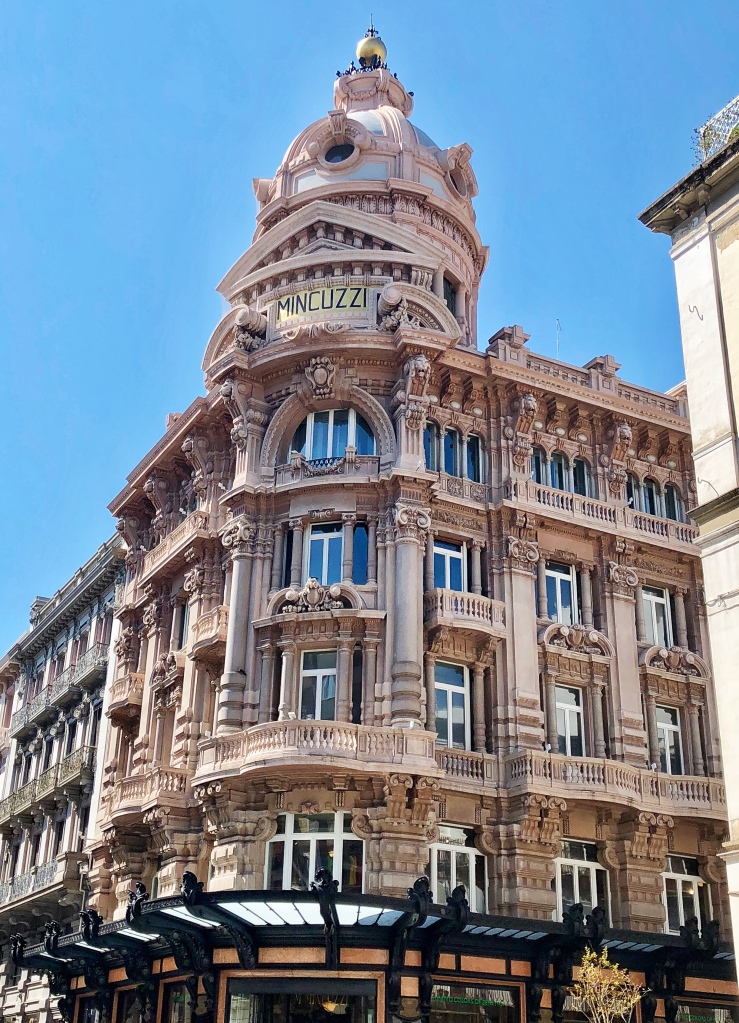
Make your way into Bari Vecchia, the previously-walled city where the true highlight for me was exploring the maze-like streets of the old town. Walk along the former walls of the city, Via Venezia, which overlooks the Adriatic Sea. Do not miss the 11th century Basilica San Nicolas (Largo Abate Elia, 13). You may want to visit the church of Saint Nicholas (on whom Santa Claus is based) in the old city where the relics of the saint remain. Santa Claus is based on Saint Nicholas, which makes this a pilgrimage destination for many Roman Catholic and Eastern Orthodox Christians. The Bari Cathedral or Cathedral of San Sabino (Piazza dell’Odegitria) and Castello Normanno-Svevo (Via Pier l’Eremita, 25/b) originally built in 1132, are both worth a peek inside while touring. You may also want to explore the iconic pink Museo Teatro Margherita (Teatro Margherita, Piazza IV Novembre) which is situated on the waterfront.
While we did not take a walking tour, there are many free (or on tip basis) walking tours of the city that may be worth your while to get an understanding of the history of the region. For those who are interested in art and have more time, the Pinacoteca Provinciale di Bari or Painting Gallery of Metropolitan City of Bari (Via Spalato, 19) provides a scenic respite from the hot sun.
Get some dinner at La Tana del Polpo (Strada Vallisa, 50), it has an iconic giant plastic octopus on the ceiling, reminiscent of Spiderman. This restaurant has attentive service, local wines and fabulous seafood. A great thing about this region is that agriculture is plentiful and you can enjoy fresh local produce in your meals.
Day 2 of 10:
Get up early to begin your trip towards Matera. “Tragically beautiful” Matera has gone from rags to riches over the past century. Evacuated in the 1950’s for rampant poverty and disease, Matera was awarded UNESCO World Heritage Site status in 1993, and in 2019 it was recognized as a European Cultural Capital.
Start your morning in the new town at the no-frills Caffè Schiuma di Rocco Luigi Schiuma (Via T. Stigliani, 92). Spend some time walking around the Civic Center of the new town section of Matera. The contrast between the modern sections of Matera and the ancient Sassi section of the city is striking.
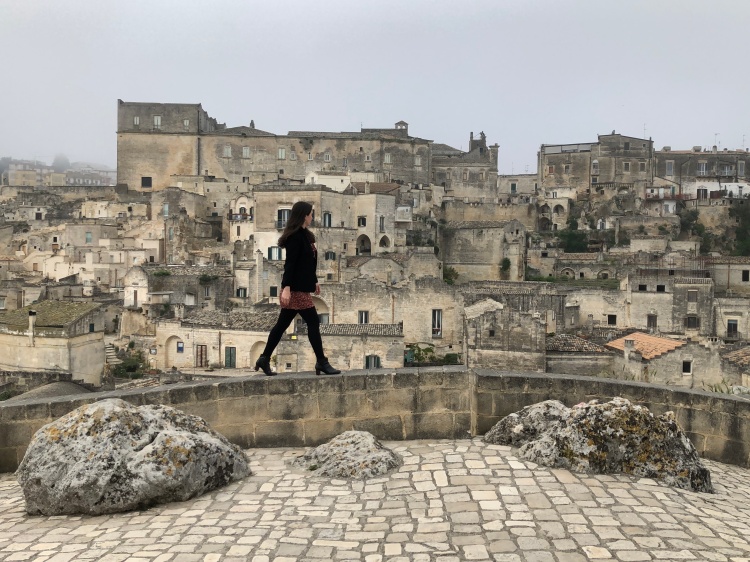
The Sassi is best explored on foot. Definitely wear comfortable shoes, or even better, hiking boots, because you will be navigating up and down ancient narrow passageways and following the routes of centuries of pedestrians. Many historians feel that the old town is reminiscent of Old Jerusalam and, in fact, the Mel Gibson film, The Passion of Christ, was filmed here. I would recommend starting at Casa Noha (Recinto Cavone, 9) for a foundation of the history of Matera. You can watch multimedia displays, with large video projections on the walls, as you move through various rooms which make the exhibit interactive. Spend a few hours walking around the shops and hotels of Sassi Barisano and the cave dwellings of Sassi Caveoso. Check out the Church of Saint Mary of Idris (Via Madonna dell’Idris). Make your way to the Cathedral of Saint Mary “della Bruna” and Saint Eustace in the Piazza Duomo. This cathedral is the highest point in Matera and is the mid-point between the two Sassis.
In the early evening, take a drive to see the sunset at Asceterio di Sant’Agnese (Contrada Murgia Timone, 75100) or Belvedere di Murgia Timone. We plugged this address into our GPS, but had to park a some distance away in a parking lot. Plan to arrive before sunset so that you have time to explore the isolated caves and the green area.
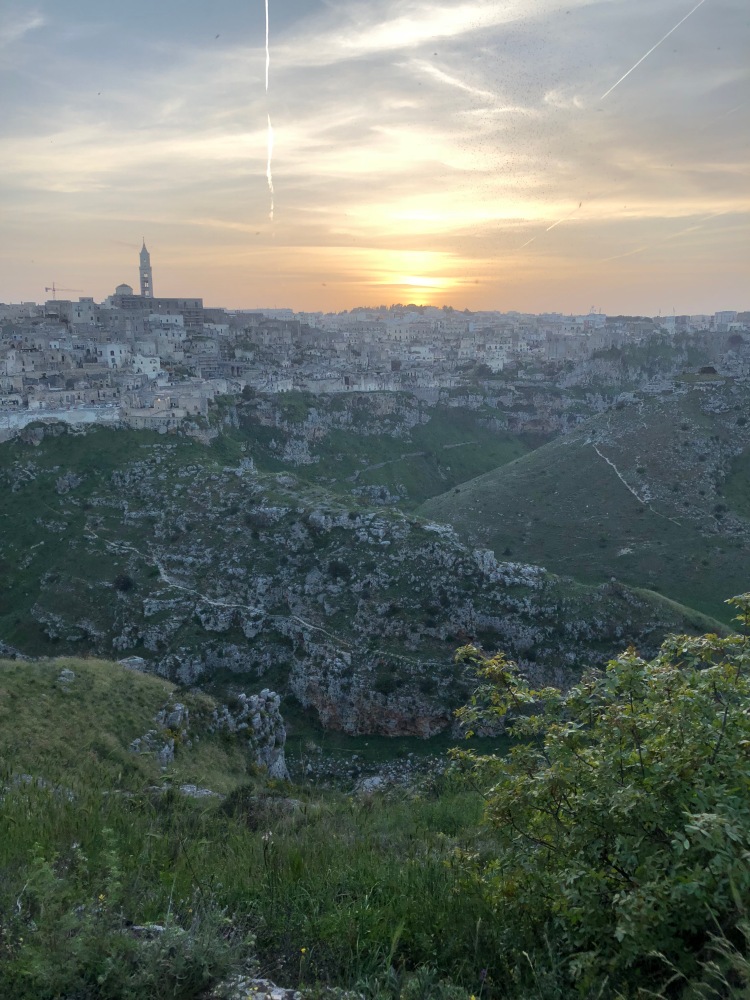
Your accommodation should be able to recommend some restaurants based on your preferences. We ate at Da Zero (Via Madonna delle Virtù, 13) and loved the pizza. I would recommend getting an evening glass of wine at Enoteca Dai Tosi (Via Bruno Buozzi, 12) in one of the cozy alcoves. To enter you take a steep set of stairs into a cavernous interior that was a former cistern for drinking water.
Day 3 of 10:
Get a coffee and pastry at Caffè Vergnano 1882 (Via del Corso, 78) then ONLY if you are as big of a nerd as I am, I would recommend going to Museo di Palazzo Lanfranchi (Piazetta Pascoli 1). The Palazzo itself is intriguing architecturally speaking. Yet, I truly went just to see Carlos Levy’s moving large installation portraying the poverty in the 20th century that led to his book.
The museum is located in Belvedere di Piazza Giovanni Pascoli (Piazzetta Pascoli) which offers a wonderful view of the Sassi from the new town and should not be missed. Again, spend your day walking around the Sassi. I went to the La Casa Grotta di Vico Solitario (Vico Solitario, 11), which I realize is the 3rd museum in two days but I truly wanted to see what it would actually feel like to live here back in the 20th century.
Get a cocktail at Area 8 (Via Casalnuovo, 15) this area, which encompasses Enoteca Dai Tosi, can be very lively at night with college students and it’s great for people watching.
Day 4 of 10:
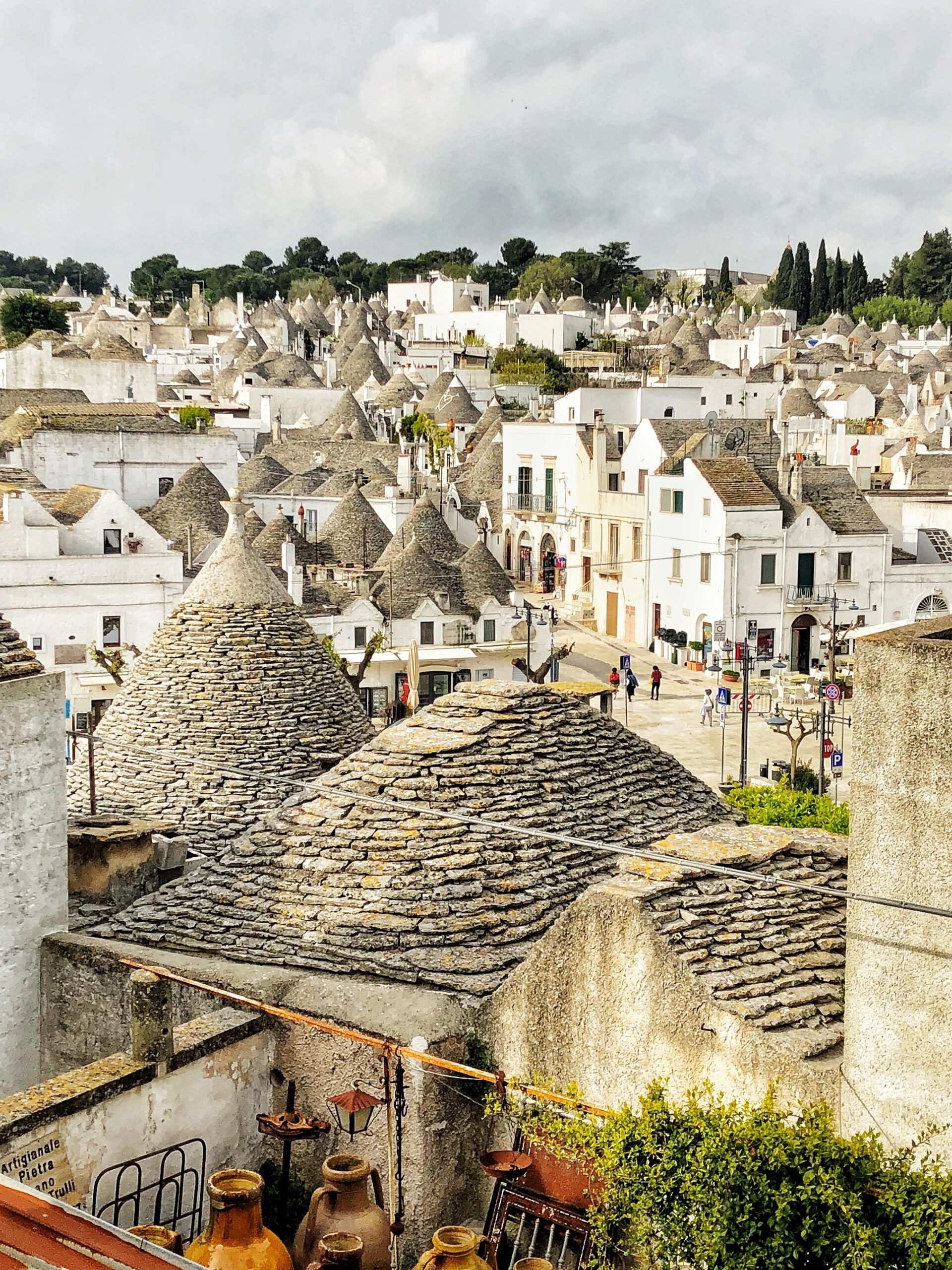
Alberobello (direct translation is “pretty tree”), the UNESCO world heritage site is known for their signature Trulli houses. A Trulli looks like a hobbit or troll house, but is a small hut-like building with conical ceiling in the Puglia region of Italy. Originally used as a storage house, the rural Puglia roads are dappled with trullis. Alberobello has the largest conglomeration of trullis. The city’s filled with Camera ladden tourists taking photos of trulli’s, majority of which have been converted to the tourism industry: gift shops, museums, and accomodations.
Personally I have a love/hate relationship with Alberobello, you need to go see it because it is so iconic, yet it is so touristy that you will be exhausted. All authenticity of this town has completely given over to tourism in order for the local economy to survive. This is the largest concentration of Trulli’s and it is truly unique to stay in one and walk around and see them. So my recommendation would be a two day one night stay and to manage your expectations. Expect camera clad tour buses rolling in mid-day. We chose to stay in Alberobello, and this allowed us to leave the town when it got crowded, but appreciate the unique architecture in the morning and evenings.
The two areas of Alberobello to explore in this half day are the Rione Monti quarter (“Mountain” district), which is the most condensed trullis in the touristy and commercial district and the more local neighborhood, Rione Aia Piccola (roughly translated to “Small yard district), where some of the trullis are still residences.
Making your way into the Rione Monti quarter, the true highlight for me was walking the stone hilly streets of the trulli neighborhood. The Belvedere Santa Lucia (Via Contessa, 70011 Alberobello BA, Italy) provides the best panoramic views of the trullis. There is a fountain and a bench nearby, if you need a rest from weaving the streets. The Church of Saint Anthony of Padua (Piazza Antonio Lippolis Canonico, numero 16, 70011 Alberobello BA, Italy) and the Basilica of Saints Cosmas and Damian (Piazza Antonio Curri, 1848-1916, 70011 Alberobello BA, Italy) are both worth a peek inside while exploring.
Where to eat: All of the food in this area is phenomenal. Most restaurants are farm to table and serve seasonal menus. Ristorante Trullo Garden (Via Piave, 35) had a great wine selection and local seasonal produce. Trattoria Terra Madre (Piazza Sacramento, 17) stuck out as our favorite, serving produce from the organic garden in the back. The region is known for orecchiette, which was part of most of the pre-fix menus.
Day 5 of 10:
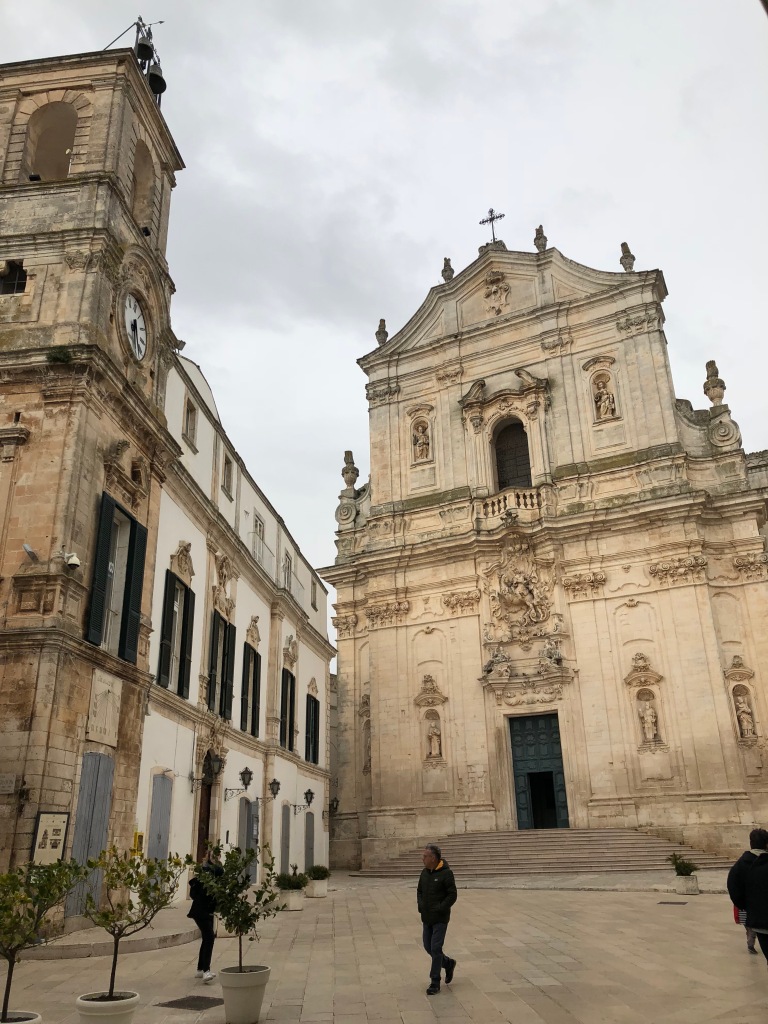
To avoid the midday tourists in Alberobello, spend an afternoon wine tasting and enjoying the village of Martina Franca. Martina Franca is an ancient town known for its fine food, home-grown wine, textiles, soccer and opera music. Green and blue shutters provide a contrast to white sandstone buildings that are tanned with age. This beautiful town provides a wonderful site for a leisurely day in the Puglian sun.
Visit the I Pastini winery. Out in the rolling hills of the Valle d’Itria, I Pastini offers tours and wine tasting at reasonable prices and sells wine to take home or to be shipped. Take the tour and learn how the farming community has lived in Southern Italy for thousands of years, and how wine is made. This region is known for red-wine grapes called “Susumaniello,” which is one of the world’s rarest wine grapes. The vineyard uses the region’s iconic truli in its original capacity, as a farm shed.
From the winery, grab lunch at Bar Adua. The family owned business has been around since 1936. If you have the chance, try capocollo, a kind of cured ham that is the pride of the town. Walk along the alleyways in the center of town and take in the beautifully crumbling Baroque buildings. In the ‘Centro Storico’, don’t miss the Palazzo Ducale, Piazza XX Settembre, Piazza Maria Immacolata, and Basilica di San Martino, a church built in the 18th century in the Late Baroque style.
Enjoy an ice cream, coffee, or pastry (or all three!) at Cafe Tripoli, the oldest cafe in Martina Franca. It is the most bustling, and is very popular with the locals. I visited during Easter week, and enjoyed a zeppole, fried dough Easter pastry that is filled with custard and topped with confections and jams. Get a seat outside to soak in the ambiance and watch the villagers.
Return to Alberobello for dinner at one of their great restaurants.
Day 6 of 10:
In the morning get up and pack up your car for your next destination: Lecce by way of Locorotondo!
The raised terraced gardens provide the support to the town of Locorotondo (“round place”), which seems to levitate above the flat countryside dappled with wild red and yellow flowers and trullis as you enter the area. Locorotondo, known nationally as one of the “Borghi più belli d’Italia” (one of the most beautiful villages), is a charming town that provides a wonderful site for a leisurely stop en route to Lecce.
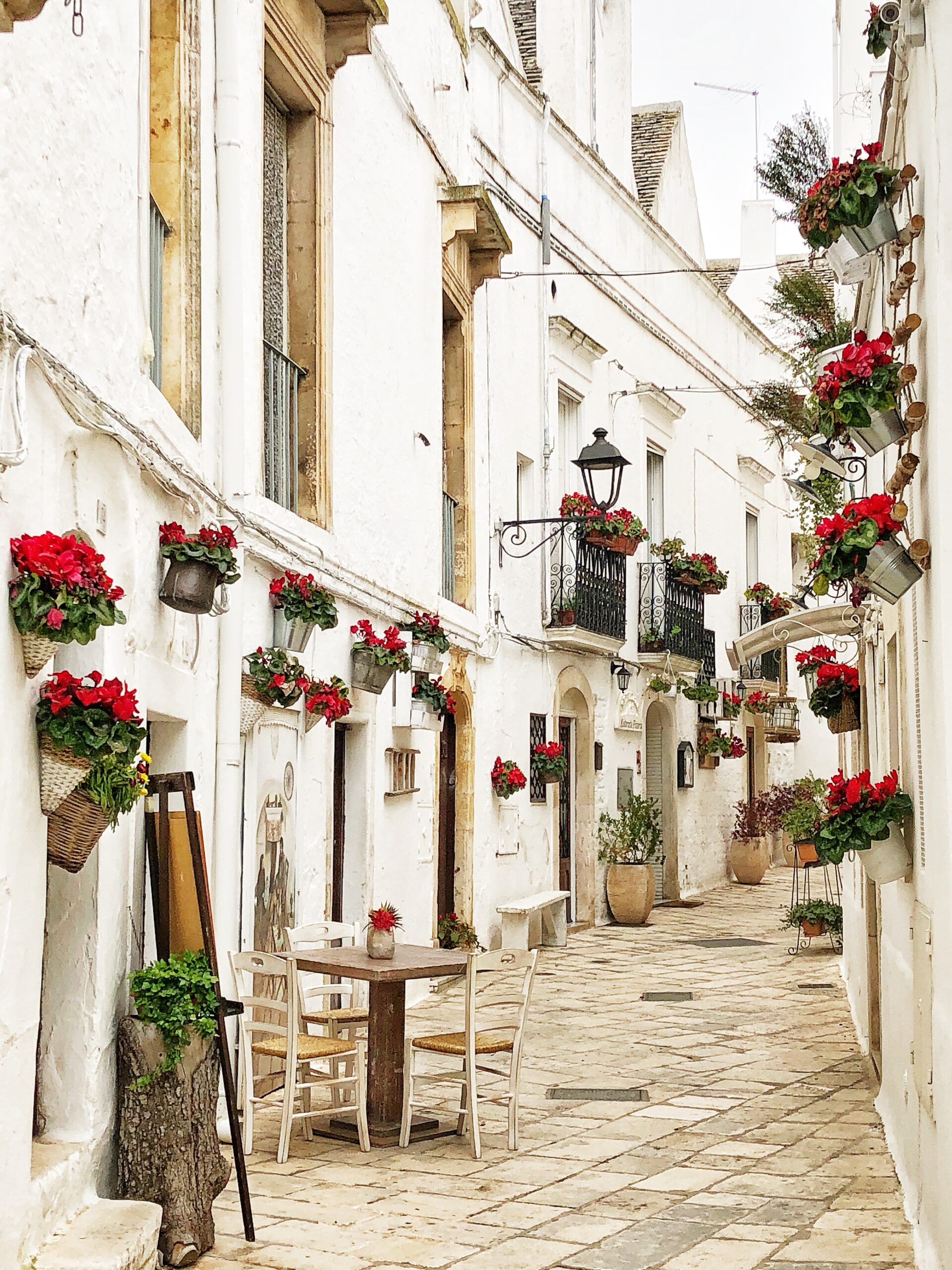
Located in the Valle d’Itria (the Trulli Valley), Locorotondo is conspicuously charming, with winding roads of white washed houses decorated with bright-red pots of geraniums and wisteria cascading over stone walls.The green and blue shutters provide a contrast to the white marbles and tanned buildings.
Start your day with a coffee from Caffe della Villa in the center of ‘Centro Storico’ and Piazza Vittorio Emanuele. See locals get their coffee while standing.
Similar to most of the towns in Puglia, the real joy of Locorotondo is leisurely wandering the streets. As a hilltop village, many of the streets offer panoramic vistas of the Trulli speckled countryside. Two such views are seen at gardens of Villa Comunale Giuseppe Garibaldi and also ironically named “Lungomare” (a road next to the sea…) on the adjacent Via Nardelli.
In the ‘Centro Storico’, don’t miss the chance to peek into three churches: Chiesa Madre di San Giorgio, Chiesa San Rocco and the Chiesa della Madonna della Greca.
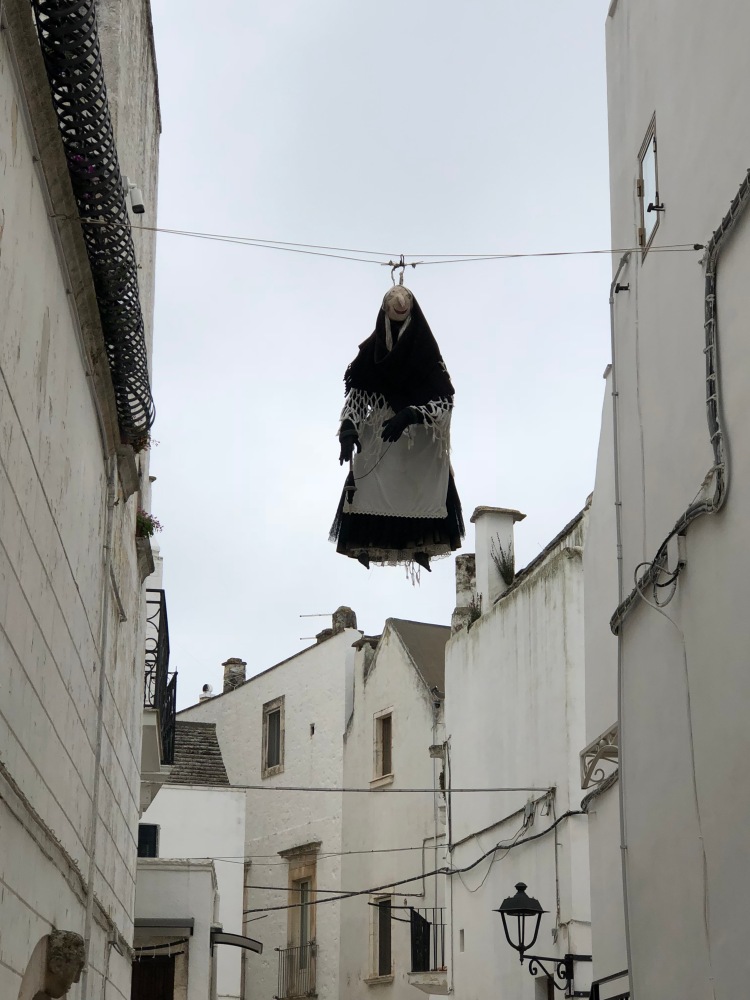
End your evening in Lecce.
Day 7 of 10:
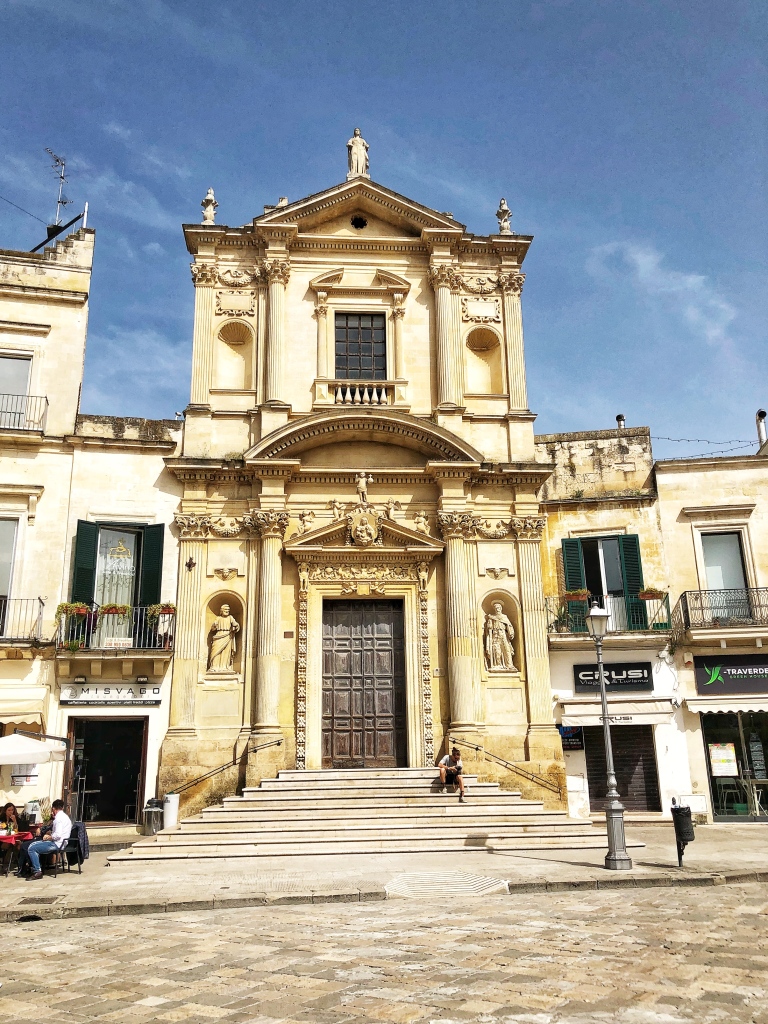
Start your morning off exploring the university town known as the “Florence of the South” for its beautiful Baroque buildings. Lecce is known for the wine and olive oil industry. The city includes many churches (cathedral and basilica), plazas, and even a Roman Amphitheater. While this offers so many gems, similar to all the quaint Pulgian towns, this is best explored aimlessly meandering the old cobblestone streets.
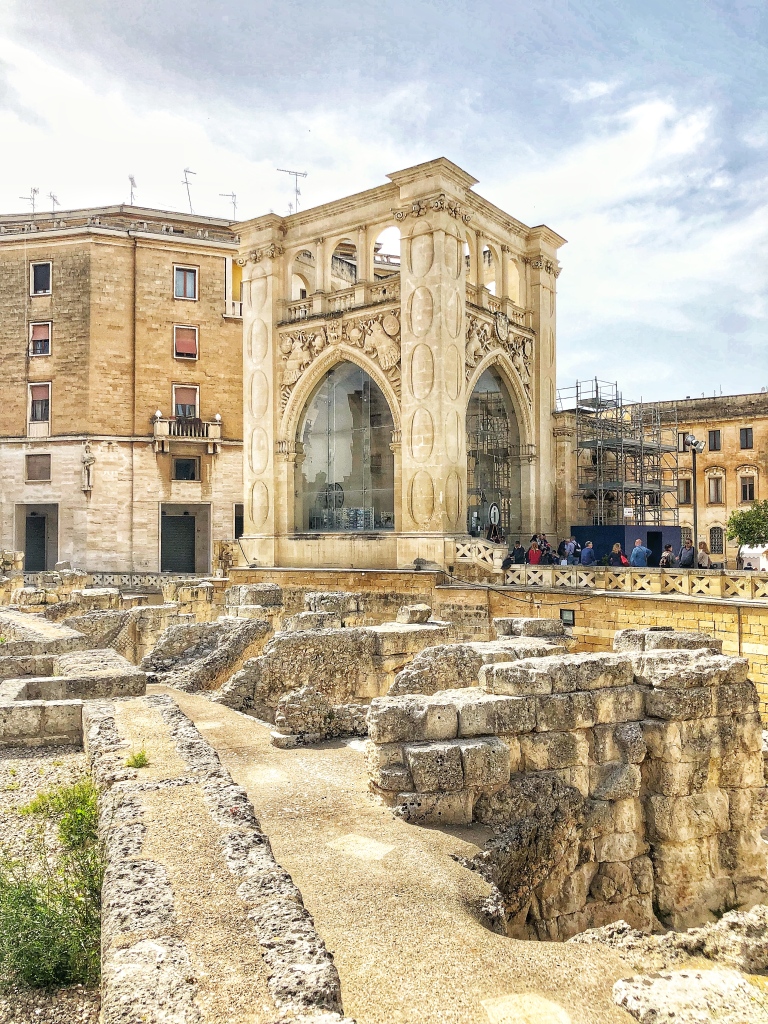
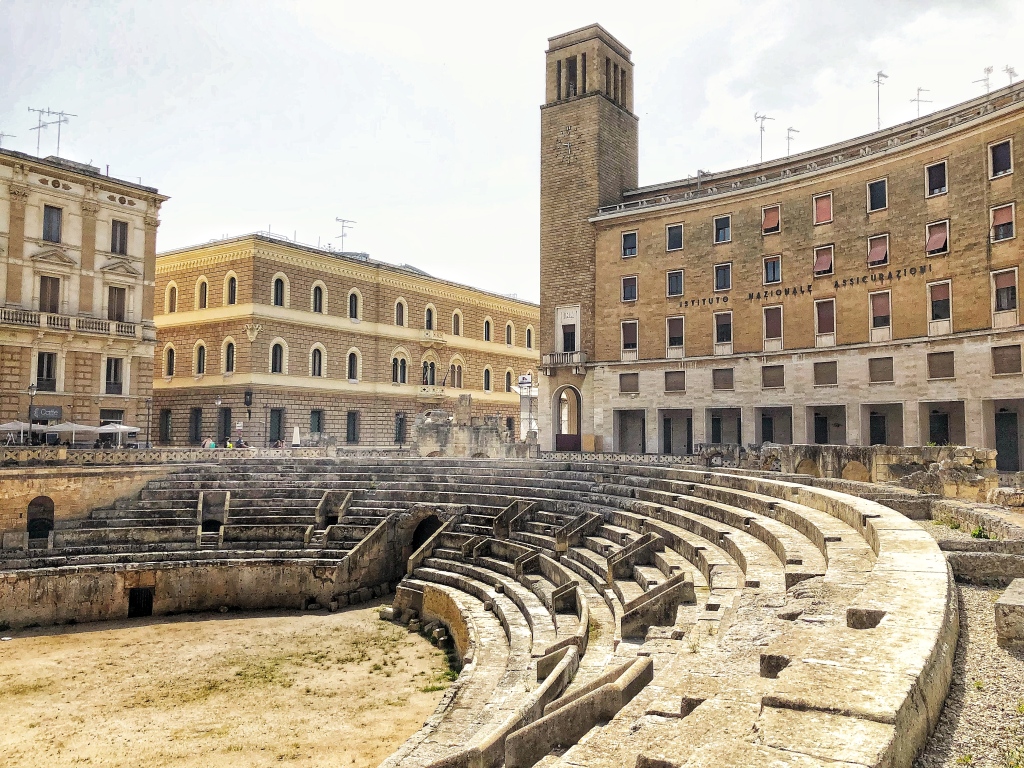
We chose to take a day trip out to an old olive oil farm, Masseria Flaminio. Ariana, who manages the farm inherited from her father. Her great-grandfather bought the land from the church in the late 19th century. During WWII American Soldiers occupied the main house and used the secondary house as a prison for German Soldiers.




Day 8 of 10:
Start your morning off with a coffee in one of the many Piazzas in Lecce, before packing your belongings to head back up to Polignano a Mar.
Italy’s Polignano a Mar, is one coastal town in the largest region in Italy, Apulia (or Puglia in English) known for its picturesque mountain top villages and rolling countryside. The iconic beach town is popular with locals and tourists alike but doesn’t get overly touristy which makes it a fun leisurely beach day. The white pebble beach framed by the natural limestone walls of the Lama Monachile Beach (just to confuse you it’s also called Cala Porte.) For those who may enjoy Sitges, Spain or Hydra, Greece this has a distinctively similar feel while enjoying its own Italian flair.
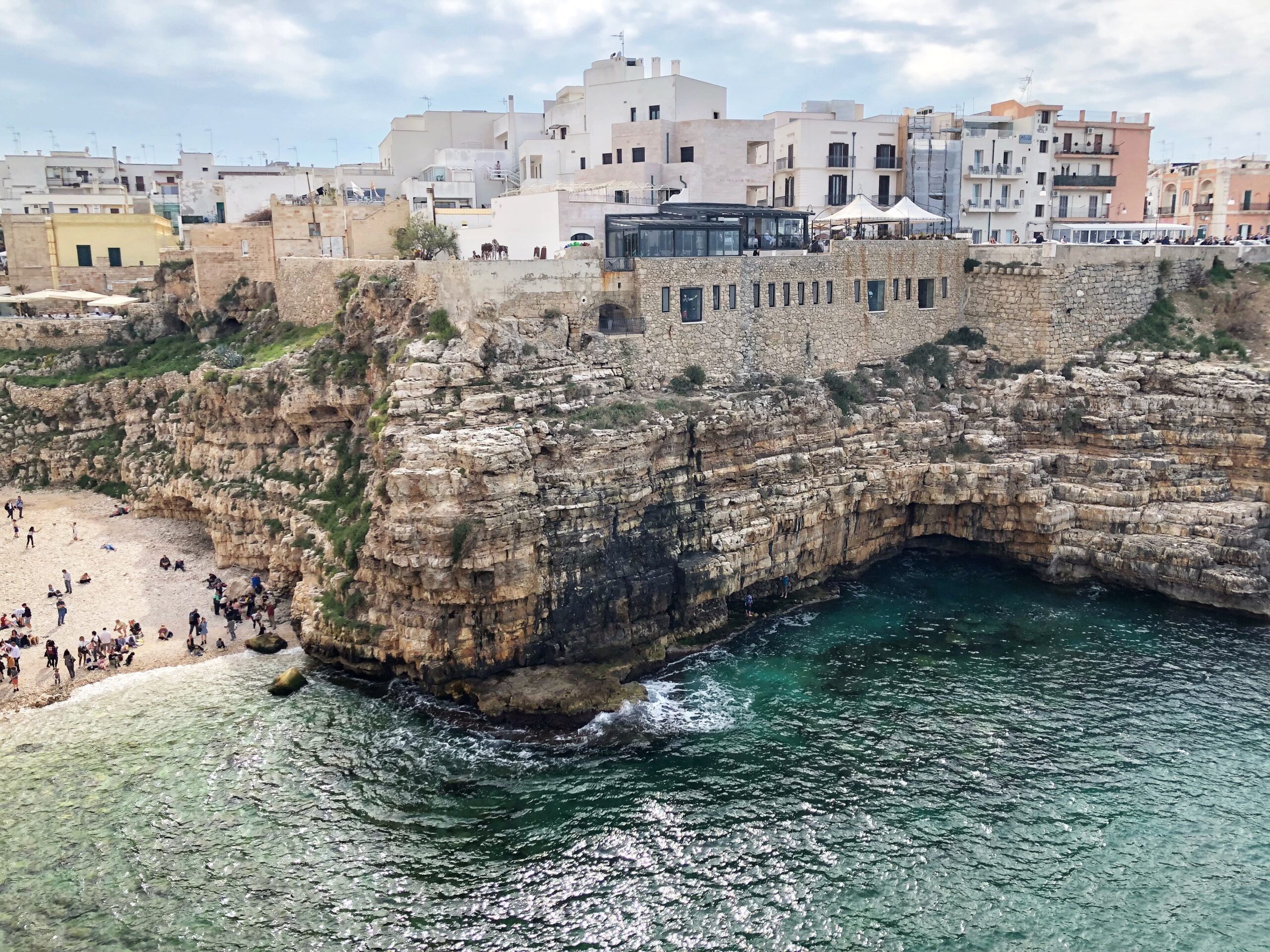
The three areas in Polignano e Mar that are worth checking out are the town center, with many beach shops and restaurants; the iconic Lama Monachile Beach; and the vistas from the cliffside roads.
Make your way to the Lama Monachile Beach. The pebble beach can be hard on some people’s feet, but the water and the view are well worth it. While we did not have time to do this during our schedule, there is a boat tour which shows guests around the caves that is highly recommended! Tours can be secured at the tourist office (Via Martiri di Dogali, 2). This is also very close to il Mago Del Gelato (Piazza Giuseppe Garibaldi, 22), which has great ice cream and coffee.
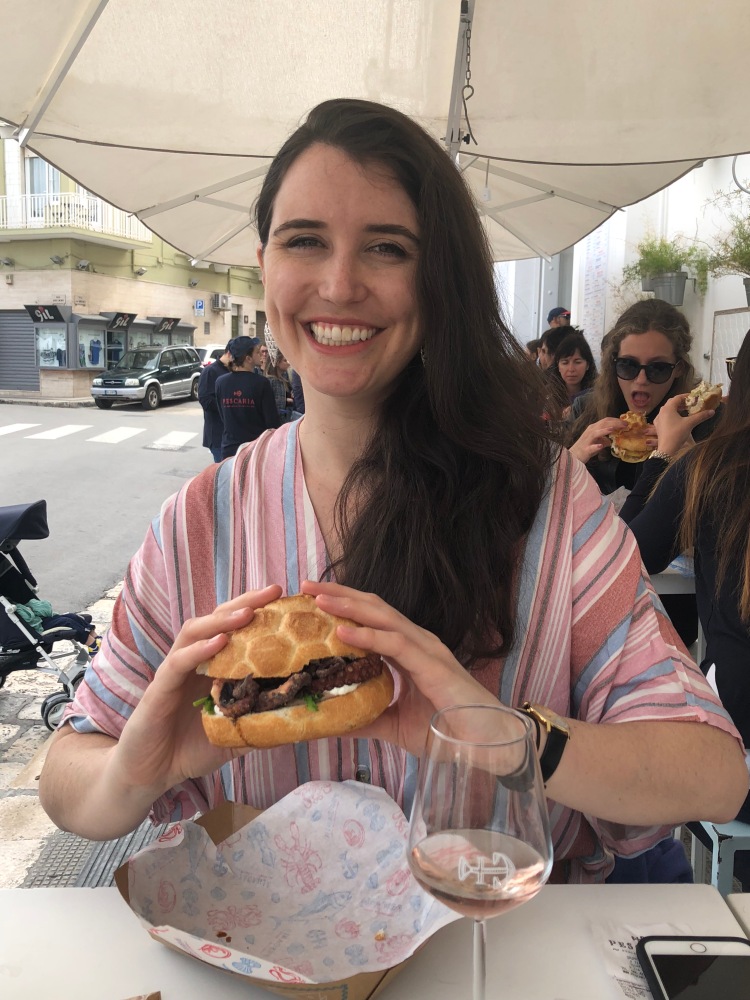
The restaurant La Pescaria (Piazza Aldo Moro, 6/8), located in the open Piazza Aldo Moro, is a true social scene. That being said, expect to wait to be seated. They have a reasonably priced menu with delicious local seafood, local wines and many people watching. Not to mention that the airy beach decor is great to sit around. This region is large in agriculture and you can eat fresh local produce in all your meals.
After spending some time at the beach or getting a boat tour, I recommend exploring the small town.
Both Caffè Dei Serafini (Via S. Benedetto, 49) and La Cueva Cafè (Via S. Benedetto, 49) offer ample outdoor space to enjoy a drink while you can watch people. For those who are interested in art and have more time, the Museum of Contemporary Art Pino Pascali (Via Parco del Lauro, 119) provides a scenic respite from the hot sun.
Day 9 of 10
From Polignano a Mar make your way back up to Bari to return your car and either take a flight home or take a train back to Rome. If there is downtime consider a section of Rome such as the Art Nouveau neighborhood called “Quartiere Coppedè.”
Day 10 of 10
Fly home after a great vacation 🙂
If you are interested in other 10 Day European itineraries check out my posts on Italy: Rome, Florence and Venice; Andalusia, Spain; or Greece: Athens, Santorini, Mykonos.
If you are exploring the Southern region of Italy, check out my itineraries for the Locorotondo and Martina Franca.

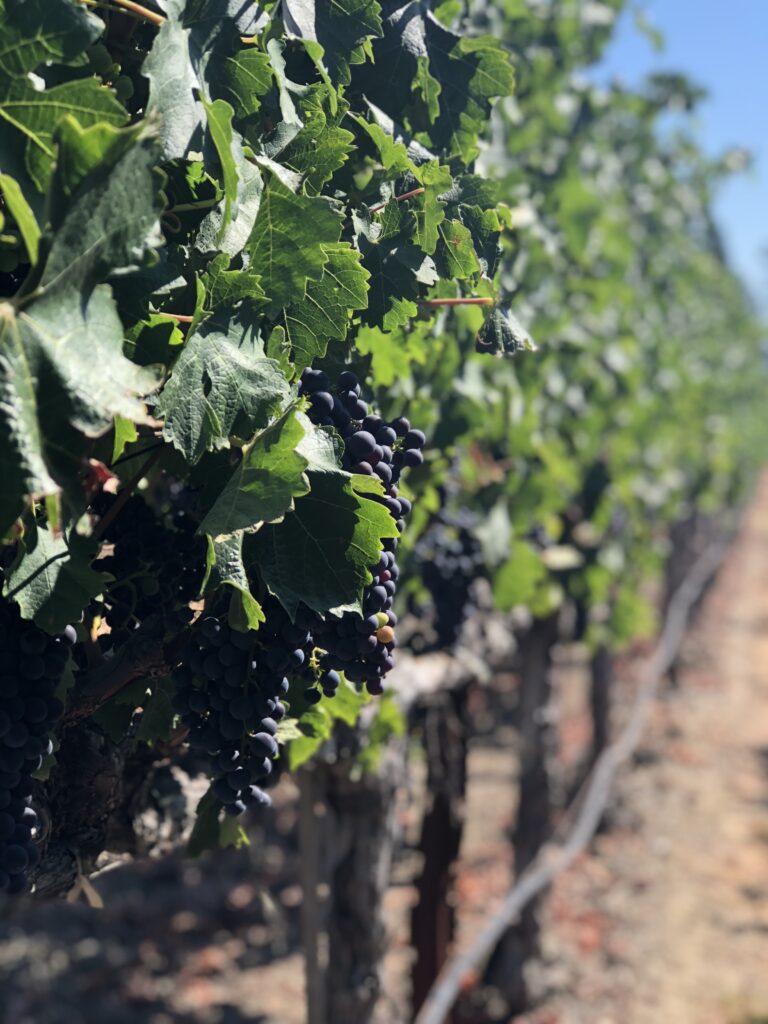
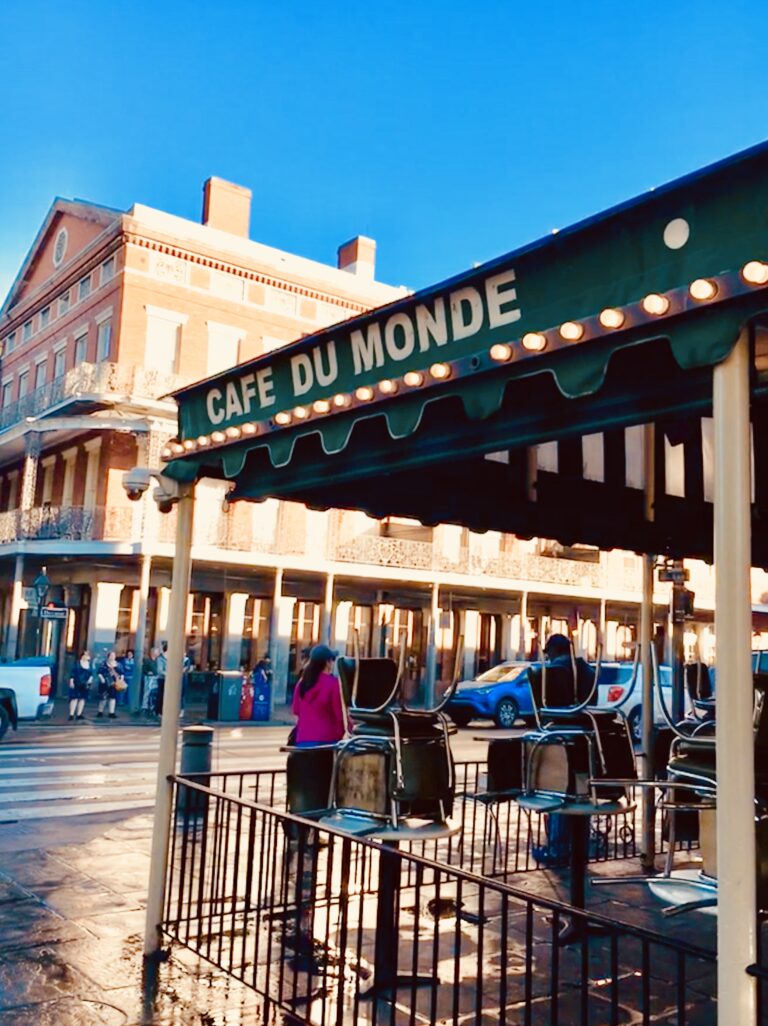
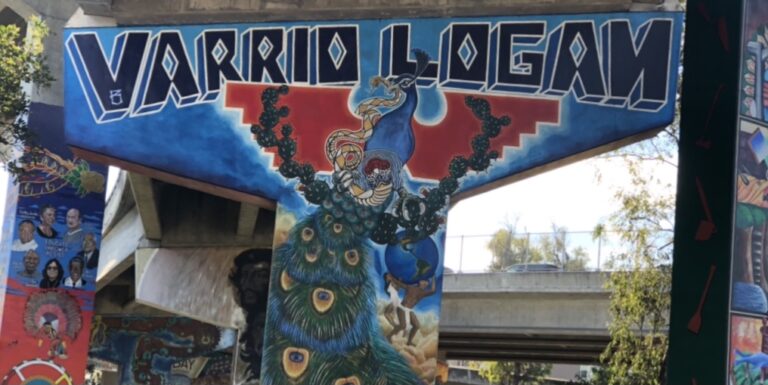
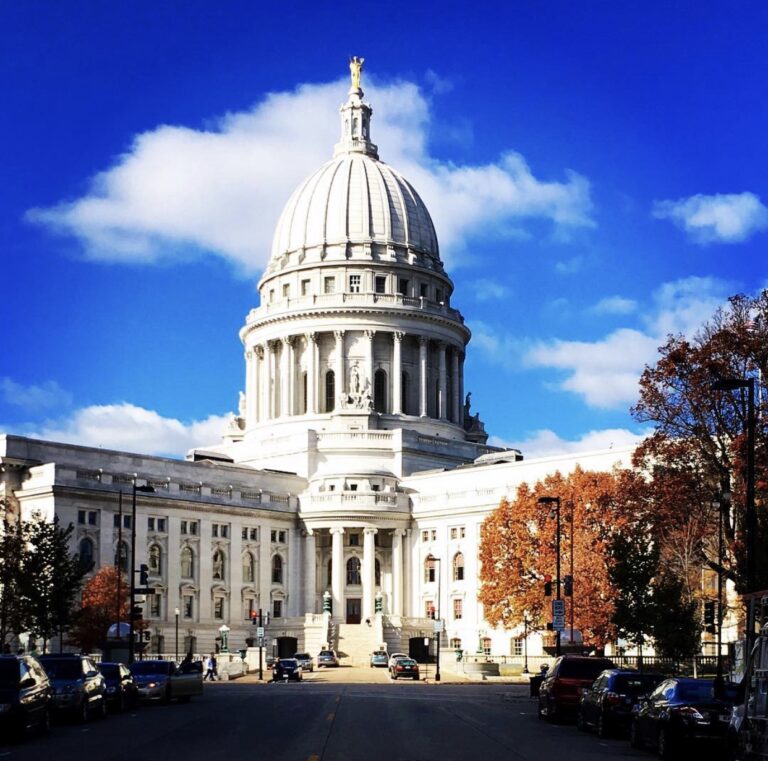
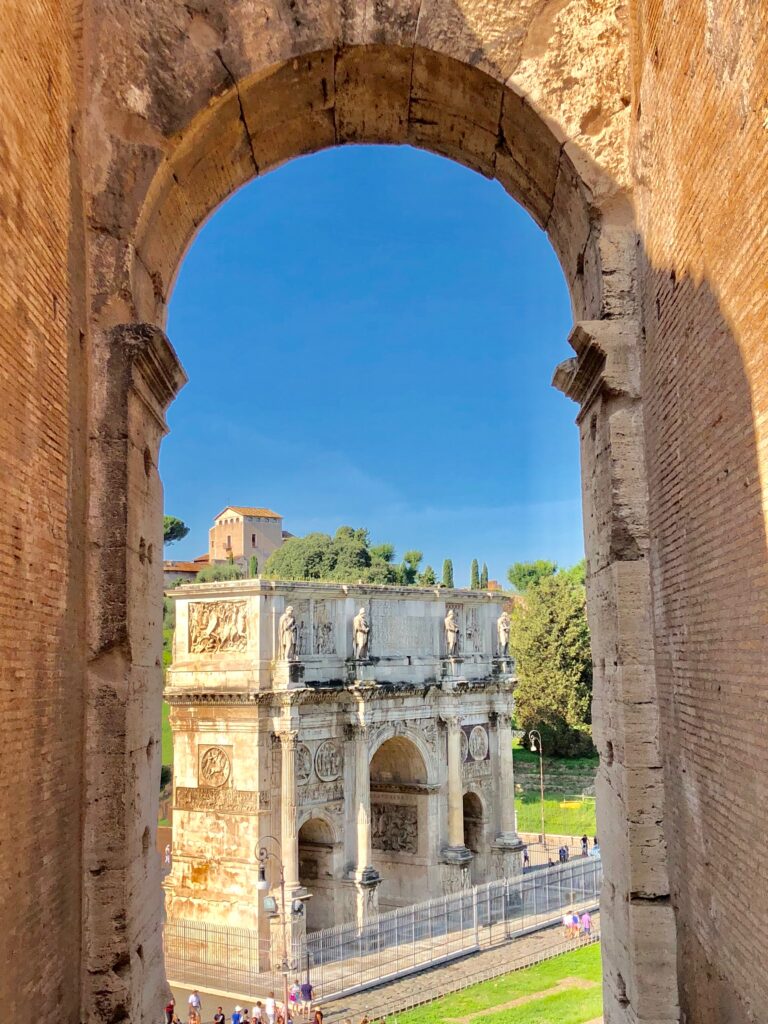
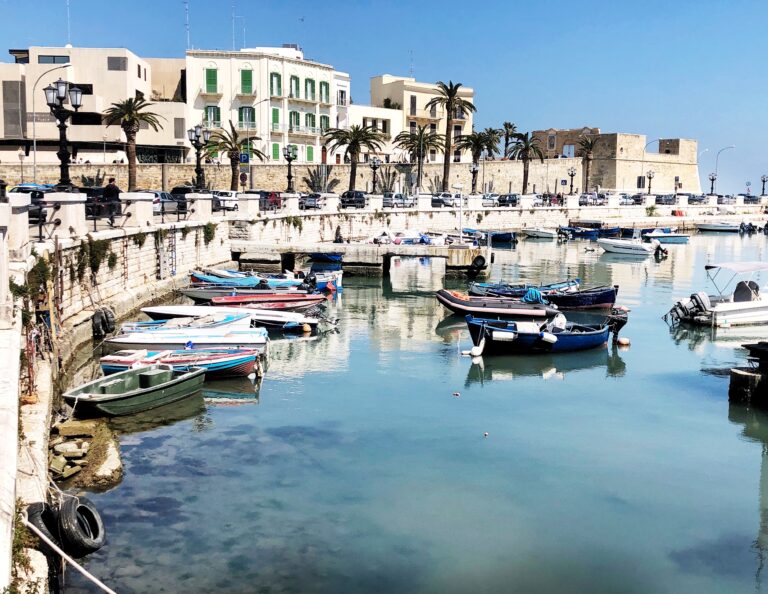
One Comment